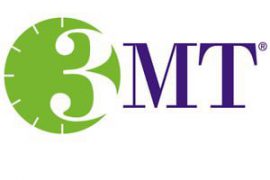Canvas isn’t just easy to use and visually appealing – it has a bunch of features that can help you save time if you know where to look and how to use them. We’ve rounded up a few of these here.
This article was contributed by Ariane Wicks, Anna Garratt, and Adam Bridgeman.
Discussion boards for managing communication
It can be very difficult trying to keep up with email correspondence from students. It is both more equitable and more efficient to use discussion board. There, students can help one another and every student can see the answers provided by the teaching team. The built-in discussion board on Canvas is intuitive with a range of tools available for both teachers and students with the facility to upload videos and files as well as social media features such as the ability to “like” posts. Alternatively, a third-party tool such as Piazza with additional features such as anonymous posting can be easily added to your Canvas course.
There are many ways in which discussion boards can be used to engage and support students. Some time-saving ideas include:
- Explain to students that you will only be answering questions about the unit on the discussion board. If a student sends a question in an email, tell them that it’s a great question and should be posted on the discussion board so everyone can see the reply. Equally, try to insist on personal issues being dealt with in person or via email. For administrative questions, politely post a link to where the information is available. For example, if a student asks when an assessment is due, post a link to the unit outline.
- Encourage peer-to-peer support by holding off from replying immediately to questions unless it is an urgent request. Use the “like” facility when students provide good answers and even email your thanks to students who go the extra mile.
- Use the discussion board to engage students. For example, you can post sample questions and ask students to work on sample answers together. Also, discussions can be restricted to Canvas groups, allowing students a place to work together on a task using the tools available in Canvas.
- Use discussion board posts as a source of ‘frequently asked questions’ (FAQ) and as a way of improving your site. If students keep asking the same question, pop it in into an FAQ page. If students can’t find important material, then consider how to improve how students navigate your site.
- Seed the discussion board. If discussions are slow to start or you want students to be thinking about a topic or even an upcoming assessment, then post questions to get them engaged.
Frequently asked questions (FAQ)
An FAQ page can be used to pull together common questions that you receive during the semester. Put a link to the page on the home page and add to it as you receive questions, such as on the discussion board or via email. FAQs generated in this way can also be useful in helping you think about the design of your site: if students are asking where the lecture notes are or when assessments are due, it might be worth making sure your menu and home page links are clear.
Quizzes and assessments
Summative and formative assessment in Canvas can be straightforward – if you get to know the tools.
Auto-marked quizzes are a great self-assessment tool for students in a range of disciplines and can help you identify common misconceptions to discuss in class. Get creative with a variety of questions types from multiple choice to fill in the blanks and keep students engaged by embedding audio-visual content. Allow students unlimited attempts, create question banks and randomise questions and answers so they never get the same quiz twice. You’ll have a great resource that you can re-use each semester, develop over time and share with colleagues. You might also want to try Canvas’ new “Quizzes.Next” engine whihc allows you to more richly integrate stimulus with questions, and also opens a few new question types.
Even though students must submit most assignments through Turnitin, you can still mark and provide feedback in SpeedGrader – and believe us, you should! You can provide feedback in SpeedGrader in many different ways – using a traditional text box, using annotations onto the document, uploading a file, recording a video or audio comment, or even by speaking your feedback into SpeedGrader and letting Canvas convert your speech into text for you. Don’t forget about rubrics – once set up, you can mark assignments with a click of a button. Rubrics are particularly useful for ensuring consistency when there are multiple markers.
Finally, for those of you not assessing via written assignments, Canvas accepts just about any type of file and SpeedGrader can handle them all including video submissions and even external websites (e.g. WordPress) – these are displayed right next to the rubric and marks entry panel. For submissions that SpeedGrader can’t natively display, it will show an easy download link for quick access.
Managing your site
You can easily control the release of content, discussions, and assignments in Canvas using prerequisites and requirements. By adding a prerequisite to a module it forces a student to complete a previous module or modules before proceeding. Requirements can also be added to a module to ensure students complete tasks in the order you wish them to and/or complete all tasks before progressing.
A great time-saving feature in Canvas is the ability to “Copy a Canvas Course”. This function allows you to copy either an entire Canvas course or selectively copy items, such as modules, pages or quizzes, from a current or past course. So, next year when you are ready to set up your Canvas site, you can simply copy what you had this year into your new site and get tweaking! Note: you must have instructor access to the course you are copying from and to.
How do you share your learning resources with colleagues? Use Canvas Commons to find, share and import resources. Commons is like a library where you can locate resources to use in your own courses or upload your own resources for others to use.
Did you know that our Canvas provides easy access to your previous Canvas courses for four years? Once the semester has finished, your Canvas course will move from your dashboard into the “Past Enrolments” area. To find these courses, go to the Canvas navigation menu on the left side of your screen, click Courses > All Courses and you will see the list of Past Enrolments. Note: Canvas also allows students to have read-only access to their past Canvas courses for four years. No more un-archiving of sites!
Tell me more!
- Check out the guides for Canvas and other online tools in the Teaching Resources Hub
- Canvas’ own community docs are a good place to search for Canvas tips and tricks – check out the guides or search the Q&A
- We have lots of short articles on effective use of Canvas right here on Teaching@Sydney





